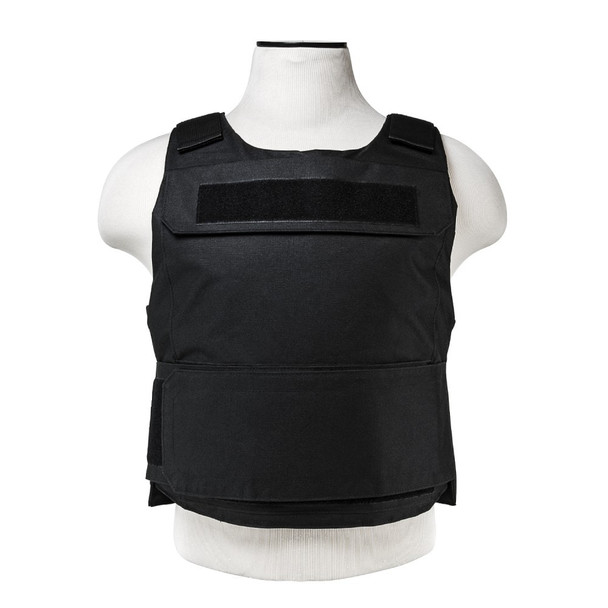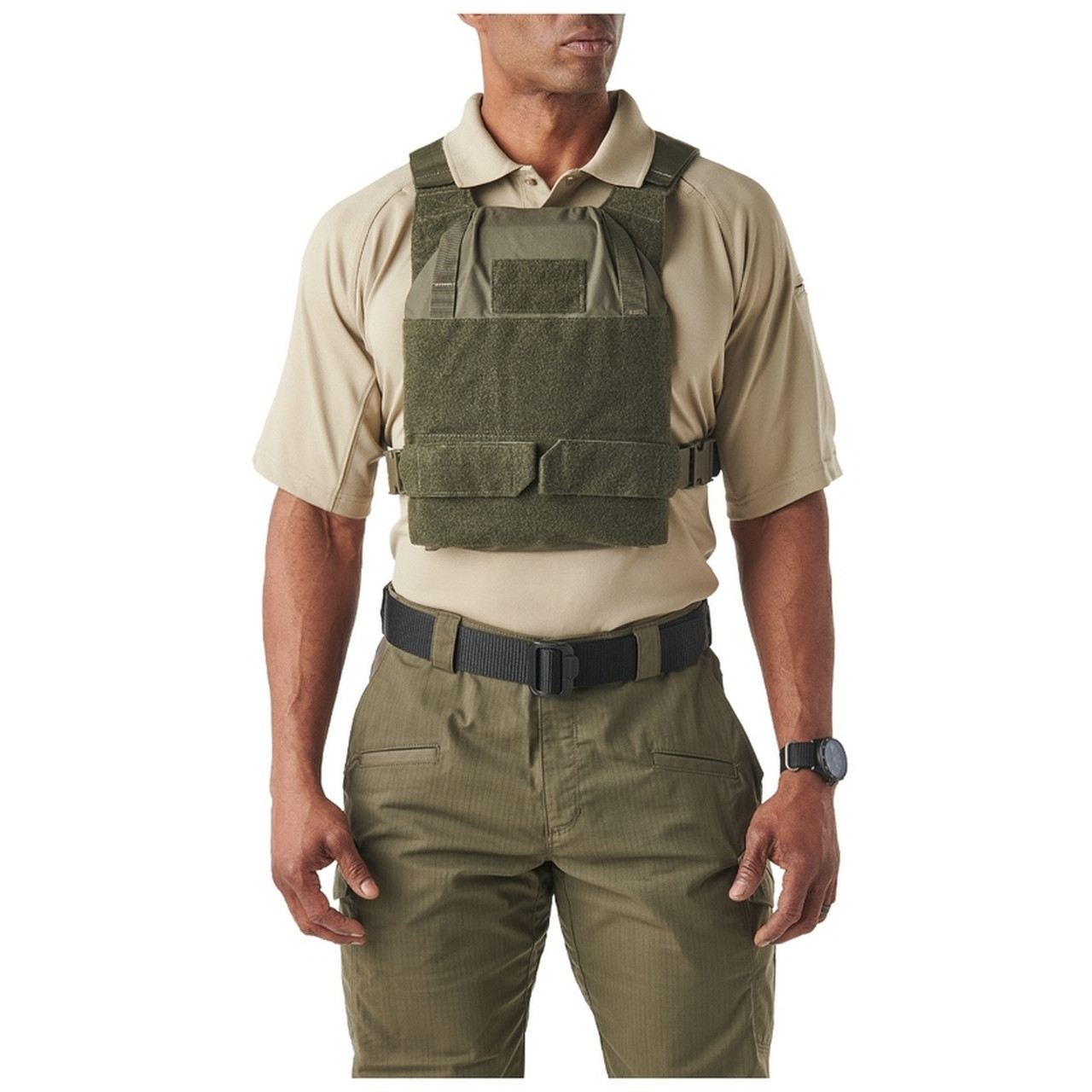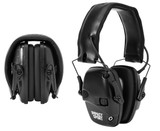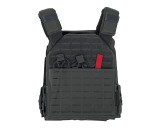How Much Does a Bulletproof Vest Cost? The Answer is More Complex than You Think
Looking at the price range for bulletproof vests, you may feel a little bit puzzled. How come the prices of two similarly looking body armors are so different? Really, why does one vest cost as low as $300, while the other one costs literally ten times more? How much does a bulletproof vest cost? How much should it cost? Let’s find out, but don’t expect simple answers.
How much bulletproof vests cost — the price range.
Ok, if you open an online catalog you can easily find professionally-looking body armor pieces for less than $150. At the same time, there are bullet-resistant vests on the market that costs up to $1000. Some pieces are even sold for $3000. Apparently, they are different. But what is that difference exactly?
Actually, the answer is multifold. The armor plate type, protection level, brand name, and other factors — all of these contribute to the final price tag. Understanding these factors is essential if you want to purchase a quality bulletproof vest.
Before we get to price factors, let’s answer another vital question: $3k bucks?! Seriously? Is it really worth it?
Why bulletproof vests are expensive
Look at the price the other way: is your life worth it? Apparently, the answer is yes. But still, body armor is not cheap. The reason if you think about it is pretty much obvious. There are some serious science and technology involved in manufacturing of the vest.
First, you need specific materials. Not typical materials you can easily find everywhere, but special high-tech synthetic materials that are able to reliably stop a high-velocity projectile. Such materials require long and expensive research and are expensive in production too.
Then, there’s manufacturing. Body armor plate carriers and bulletproof vests require qualified and experienced personnel and specific equipment to be made. This also takes investments.
Finally, body armor needs to be certified. The manufacturer is obliged to perform a series of tests to ensure the bullet-resistance capabilities of each armor product line and certify it as such. The tests involve shooting at a piece of armor multiple times with specific ammunition types from certain ranges and angles. And in order to certify each armor model, the manufacturer has to provide multiple samples of that model for testing. This is expensive.
Overall, even affordable bulletproof vests require a lot of investments to be manufactured. That is why some body armor costs can skyrocket to outer space. But why do other vests cost less then? Let’s talk about different factors that can influence the price.
Factors influencing the price of bulletproof vests
Armor type
Sometimes, online shops do not make it clear. You see a picture of a full-featured bulletproof vest and think you got it all for $100. But in fact, this is merely a plate carrier. Which means you will need to also buy armor plates to insert into the carrier.
So you should clearly understand what you buy:
- Body armor plate. This is the actual armor that stops the shot. There are different types of plates (see below) and sizes too.
- Plate carrier. This is a gear you need to wear armor plates on your body. Basically, this is a vest with broad straps and a size adjustment system. A plate carrier itself does NOT have any bullet-resistance capabilities!
- Bulletproof or bullet-resistantvest. This is an all-in-one product that incorporates a plate carrier with built-in or removable armor plates.
- Other types. There are other types of personal armor available in stores: bulletproof backpacks, blankets etc.
When comparing prices, make sure you don’t compare apples with oranges.
Protection type
There are two types of body armor vests: soft armor and hard armor.
Soft armor is made of flexible synthetic fibers such as nylon, Kevlar, Dyneema etc. Hard armors are made of steel, ceramic or polycarbonate, but some advanced materials such as UHMWPE are also commonly used.
The type of body armor has a great impact on its price. For instance, a simple basic-protection soft armor made of nylon may cost around $200. Such bulletproof vest is typically NIJ Level II or NIJ Level IIIA with minimum advanced features. Aramid-based vests start at $300 with the top line at $800.
As for hard armors, hard polyethylene armors start at $300 per plate for Level III armor and from $600 for Level IV. Steel is much cheaper with decent plates starting from $120. There are also hard polyurethane armor plates that are even more affordable while still providing reliable Level IIIA or Level III protection. Ceramic body armor plates are at the opposite side of the price range, and start from $500.
Apparently, bulletproof vests cost higher than the price of just one armor plate. As for those “Levels” we’ve just mentioned, we explain them shortly.
NIJ certification
One of the major factors influencing the cost of a bullet-resistant vest is whether or not the vest is certified (actually, it must always be certified, do not buy non-certified armor!), and what NIJ Threat Level it is certified against.
NIJ stands for the National Institute of Justice. This federal organization issues personal protection standards and certifies body armor and bulletproof vests. Currently, there are four NIJ Levels:
- NIJ Level II. A bulletproof vest certified as NIJ Level II can stop most low-velocity bullets, such as 9mm and .357 Magnum. Quality Level II body armor costs around $250 to $500.
- NIJ Level IIIA. A soft body armor designed to deal with medium-velocity bullets and shells: .357 SIG, .44 Magnum, 12 gauge. Prices for Level IIIA armor start at $300 and can go as high as $800 per plate. However, sometimes you can find more affordable alternatives too.
- NIJ Level III. This is the most common armor standard for rifle protection. It successfully stops 7.62mm x 51 M80 which is the most widespread rifle ammunition today. You can buy a basic good quality Level III for $300. But the upper limit is much higher.
- NIJ Level IV. Finally, the most advanced type of protection that can withstand shots of armor piercing rounds. There aren’t many cheap Level IV armor on the market. The cost of a bulletproof vest starts from $700, but the actual prices for a good piece are even higher.
There is one type of armor not mentioned here, but widely present in online stores: Level III+ body armor. The “plus” means that such a bulletproof vest offers some additional protection over the NIJ Level III standard. For example, some Level III+ armor plates can stop 5.56 M193 or 7.62x39 ammunition. If you want to learn more about Level III+ type of armor, its advantages and drawbacks, please read our article here.
Material
The material the armor is made from has a great effect on its price.
Let’s take steel. Stainless steel is cheap yet extremely effective as a material for body armor. Yes, it has some drawbacks too, but some of the best armor plates ever created are made of steel.
Then, there are aramid fibers and nylon. Good nylon armor can cost $200 or $300. And that’s Level IIIA! Quite a deal. Polyurethane armors or PU+ceramic composite are also very affordable and can even deliver Level III protection.
Hard polyethylene and ceramic are pricey, but efficient. UHMWPE Level IV armor can cost up to $1500.
Multi-hit capabilities
Normally, a body armor plate must survive a certain number of shots according to NIJ 0101.06 standard. However, sometimes the manufacturer can guarantee multi-hit capabilities of the armor. Such armors deal with multiple hits better than others without compromising protection, and the cost of such vests reflects this proportionally.
Importantly, there are no armor plates that can withstand multiple hits into the same point!
Stab resistance
While providing bullet-resistant capabilities, many armor vests are prone to stab or piercing damage. Additional stab resistance is the option that can slightly increase the price of a bulletproof vest.
Accessories
Earlier we discussed that a bullet-resistant vest consists of a plate carrier and armor. The plate carrier part also contributes to the final cost of the vest. The vest can be a simple generic vest, or it can be a super-low-profile concealable vest, or it can be an oh-so-tactical vest staffed with lots of pouches, MOLLE webbings, and tactical accessories and interfaces.
Sure enough, a basic bullet-resistant vest costs less than its advanced counterpart. Sometimes you need those additional capabilities, sometimes you don’t. So you better carefully select the options you really want to pay for before throwing in your money.
Brand
Ah, yes. A brand name is one of major price factors too. Personal protection is not fancy clothes or muscle cars, but some brands are worth more than others nevertheless, that’s true.
Of course, you shouldn’t buy a ballistic vest just because of a brand name. You should examine all the features and capabilities of the armor. But the well-known name gives you some confidence in the product, so if you don’t want to spend days on comparison and thorough research you may prefer to pay a bit more and rest assured you’ve got a quality bulletproof vest in the end.
“Made in the U.S.” label
While Chinese armor is cheaper, its quality is generally questionable or unstable. If a product is made in the U.S., this means it complies with strict U.S. regulations and standards, and the skilled professionals who made the armor were adequately paid for that. In fact, United States has one of the most stringent rules and quality control measures than anywhere else in the world. If you see a “made in the U.S.” label, that’s a huge “yes” sign.
On the other hand, even if there is no such label, this does not necessarily mean the bulletproof vest is bad. Make sure to consider all other points in the list.
What else to consider when evaluating the cost of a bulletproof vest?
Above are the major factors, but there are other, equally important ones that you should take into account.
- Weight. Even the same-material armors may have different weight. This depends on the technology used, the quality of materials and the design of the vest. While both light and heavy armor can protect you from ballistic threats, a lighter armor is typically of better quality (and often higher price). Also, low weight of the armor helps you stay mobile on the mission which can be life-saving in particular situations.
- Durability. Durability is extremely important. Not only because you don’t want your armor to fail right during the mission when you’re under fire. But also because it ought to protect you for as long as you wear it, without degradation of its protection capabilities with time.
- Overall quality. The bulletproof vest must not necessarily be expensive. But it must be of high quality. Have you heard of a “pinch test”? This is a quick and simple way to test the quality of an armor plate. Take a plate and pinch its material between your fingers. Do you feel some foamy material between your fingers? If so, the armor plate is probably not a quality one.The “torque test” also allows you to identify bad quality armor. Take a plate for two opposing corners and twist it back and forth. Do you hear any crackling or rattling or crumbling? In the case of good armor, you should not.The “tap test” is a third way to quickly see the armor is in a good shape. Place the armor plate on an even surface, strike face down. Then, tap the plate with a small instrument starting from edges and going in circles to the center. You should hear chimes, not thuds.
Would it be a big mistake to buy an affordable bulletproof vest?
With all above being set, you should not think that the only good armor is the one that costs $1500 or more. In fact, there are plenty of affordable options on the market, but you should be critical when reviewing and selecting among them.
First of all, never-ever buy a non-NIJ-certified ballistic vest. If the armor piece is sold in the U.S. it must be certified! Regardless how attractive the price is: ditch it can look further. Your life depends on it, remember? Do you really want to risk your life to save a few bucks? No way.
Then, you should see if the company that manufactures and sells a bullet-resistant vest offers some type of warranty. Ideally, they must offer the standard NIJ warranty which is 5 years and some manufacturer’s warranty too. The latter may be 1, 3 or even 5 years above what the NIJ requires. For instance, Battle Steel offers 10 years warranty for its bulletproof vests.
Don’t neglect looking at the brand and reputation. Yes, you might not be ready to overpay for world-class brands yet, but hey, they are others. Just don’t buy some noname crap at a suspiciously looking website.
Look for testimonials too. See if the manufacturer publishes reviews and testimonials of its users on the website. Make some googling to find other buyer’s opinions on the web. If you see only negative reviews (or don’t see any at all) — you probably don’t need to buy this particular set of armor.
Customer service. Don’t hesitate to write directly to the seller or to the manufacturer of the vest and ask your questions. Good customer service is always a good sign. Shady sellers won’t respond to your messages or calls.
In conclusion
A good bulletproof vest may cost a lot. But not more than your life or well-being. There are ways to save on buying personal armor, but do not chase the lowest prices and best deals beyond necessity.
Recent Posts
-
Understanding Ballistic Shield Ratings and Their Applications
The Trusted Name in Tactical Defense - BattleSteel® When it comes to protecting those who protect us …2025-04-19 -
The Importance of Hearing Protection in Tactical Environments
The Legacy of BattleSteel® BattleSteel® is a trusted name in the world of tactical defense equipment …2025-04-14 -
How to Properly Fit and Wear a Plate Carrier
About BattleSteel and Their Mission BattleSteel is a trusted name in the tactical gear industry, ren …2025-04-11





